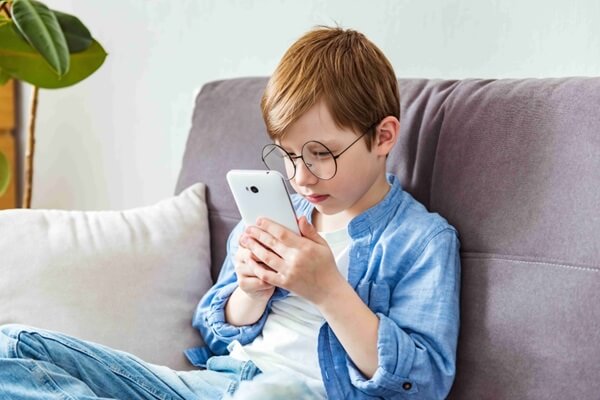Myopia is simply the clinical term for short-sightedness; a condition where objects close to you are clear and in focus, but objects at a distance are blurry or out of focus.
Myopia is caused by the eye growing irregularly. When the length from the front to the back of the eye is too long, the light doesn’t land correctly on the back of the eye, causing focusing issues.
Myopia typically develops in childhood when the eye is still growing. While genetics plays a part, studies show that increased screen usage and time spent indoors is boosting the prevalence. It’s estimated that by 2050, roughly 50% of the population will be myopic.
As it’s such a common condition, it’s important to know what to look out for, how it affects children, and what the available solutions are.
Signs and symptoms in children
Recognising the signs and symptoms early is critical. In addition to regular exams, it’s worth booking an eye exam if your child is:
-
- Squinting when looking in the distance
- Rubbing their eyes and/or blinking excessively
- Sitting too close to the TV
- Finding their eyes are irritated, tired or sore
- Finding concentrating in class or playing sports difficult
- Experiencing chronic headaches

The importance of eye exams
Even being alert to these signs, your child’s issues may go unnoticed. It’s important to book routine eye tests while your child is growing up as they have no prior frame of reference or may not be able to communicate their needs effectively. Remember, the earlier treatment begins, the better.
Safeguarding against myopia development
It’s not enough to just purchase regular prescription glasses. These might correct the vision in the short term, but they will not help slow the progression of myopia.
Laser surgery doesn’t cure myopia , can we just say there are a few options that can stop the condition from progressing rapidly.
Myopia management and solutions
One simple (and free) thing you can do is to reduce screen time and encourage your child to spend more time outdoors. Also during necessary screen use, factoring in regular breaks is vital.
In addition, at our practice, we offer some of the latest technology available.
Ortho-k
Ortho-k (orthokeratology) refers to a type of contact lens that is worn overnight and removed in the morning. As your child sleeps, the lenses work on gently reshaping their eyes. Effects typically last for 24 to 72 hours, and have been shown to slow myopia progression effectively. They are available for children aged 8 and above.
MiSight
MiSight daily contact lenses are another popular choice. These specially designed lenses have been proven to slow down myopia and are a hygienic and convenient option which gives full freedom of movement and vision. They are also available for kids aged 8 and above.
MiYOSMART
The majority of children warm to contact lenses but glasses for myopia are an option too. MiYOSMART spectacles contain award-winning revolutionary technology that has been shown to slow down myopia by 60%. Wearing frames with MiYOSMART lenses will mean they can wear lighter and thinner lenses for longer.
Get in touch
For further advice, please check out our Myopia Management page or get in touch with one of our friendly team today.



